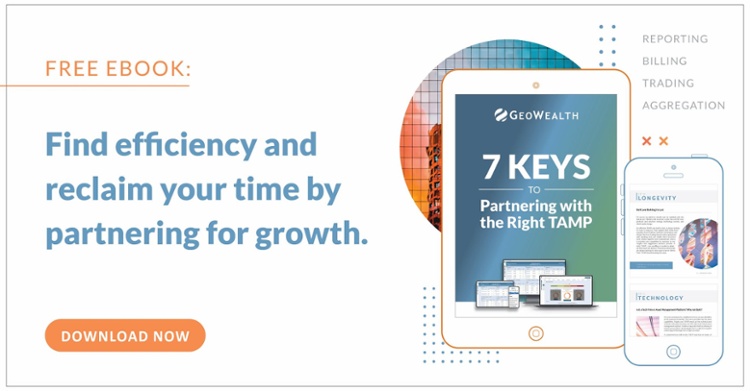Value Levers: Seven Ways RIAs Can Increase Their Appeal Ahead Of A Sale
Scale & Efficiency • Written by: Brendan Falls, CFP®

Higher Valuations Are Possible By Adjusting Your Approach To Common Factors
This article was originally published on Wealth Solutions Report in october 2023.
Despite today’s macroeconomic environment, characterized by high inflation and rising interest rates, RIA M&A activity continues at a blistering pace. According to Fidelity Investments’ 2023 M&A Valuation and Deal Structure survey, from January 2020 to March 2023, RIA M&A deals increased 237%, with 492 transactions reported, compared to 146 from January 2017 to July 2019.
Advisors who don’t anticipate selling or transitioning from their firms anytime soon can benefit from maximizing their firm’s enterprise value, as well as from understanding what potential buyers are looking for in a practice. It’s essential to note that a potential seller can’t define the value of their firm. Even from a business valuation standpoint, which can estimate your equity, asset sale, liquidity and enterprise values, a firm won’t be able to nail down the most important factor contributing to what it actually sells for – the buyer’s point of view.
The same Fidelity study reports that 87% of buyers who walked away from a potential sale did so because valuation expectations were not aligned – which represented the top reason for terminating a deal.
Given this backdrop, what are today’s RIA buyers looking for in an acquisition?
1: Growth
Overall growth holds significant importance for potential buyers. When evaluating a firm’s growth potential, buyers typically assign heavier weight to organic growth over inorganic growth. Represented by the market appreciation of assets under management (AUM), inorganic growth can be discounted since it’s not considered a concrete indicator of value creation. Organic growth, specifically via new client acquisition, can be a true driver of value because more clients typically translate into increased revenue streams.
It’s essential for RIAs to track new client accounts as a key performance indicator to demonstrate their ability to generate organic growth.
2: Scalability
It’s easy to conflate scalability with top-line revenue growth, but there’s more to it than that. True scalability requires reducing costs incrementally while growing, reflecting a reduction in operational expenses as a percentage of revenue. Buyers and valuation consultants will focus on the growth of free cash flow, or profit from operations after taxes.
3: Repeatability
Buyers value repeatable processes. The less they have to learn from scratch or implement themselves to keep a target firm running smoothly and profitably, the better. An integration or transfer of ownership will be more seamless and successful if these repeatable mechanisms are already in place.
For example, a comprehensive model portfolio program is more attractive to a potential buyer than having to manage hundreds of custom allocations.
4: Diversity Within Your Client Base
Large client minimums are attractive, but investors with significant assets tend to be older, wealthy baby boomers, a segment that creates inherent risk for a buyer if those assets are eventually passed to heirs who aren’t clients. Buyers will project a firm’s earnings today and into future years to determine its value, and younger clients in the accumulation phase represent greater future earnings potential.
5: Investment in Technology
A direct correlation exists between what an advisory firm spends on technology and the affluence of their client base. An FP Transitions study that looked at firms between $240 million and $360 million in AUM found that the average tech spend was $33,000, while average client affluence was $973,000.
Conversely, firms in the study that spent more than twice the benchmark of $33,000 on technology had an average client affluence of $1.18 million, a 21% increase. Despite having very similar revenue and AUM as the firms that averaged $33,000 on their tech stack, the valuation of the firms that spent more was $710,000 greater.
6: Licensed Employee-to-Client Ratio
Buyers value firms that can successfully service a large number of client relationships, and licensed employees directly providing advice to clients are the most valuable. Charles Schwab’s 2023 RIA Benchmarking Study shows that investment professionals were responsible for an average of 58 clients in 2022, up from an average of 53 in 2019. Investing in technology can free up both time and employee resources to service more clients more effectively.
7: Using a TAMP to Enhance Your Firm’s Value
The closer an RIA resembles a sizable, efficient and well-organized entity, the more it will attract prospective buyers. Collaborating with a partner to eradicate inefficiencies in both middle- and back-office operations – one that is capable of constructing comprehensive portfolio solutions tailored to meet unique client requirements in a scalable manner – can increase the value of the firm from a buyer’s perspective, with the potential to exceed the average industry growth rate.
See GeoWealth's Turnkey Asset Management Platform in action.
Schedule a one-on-one consultation with our team.

